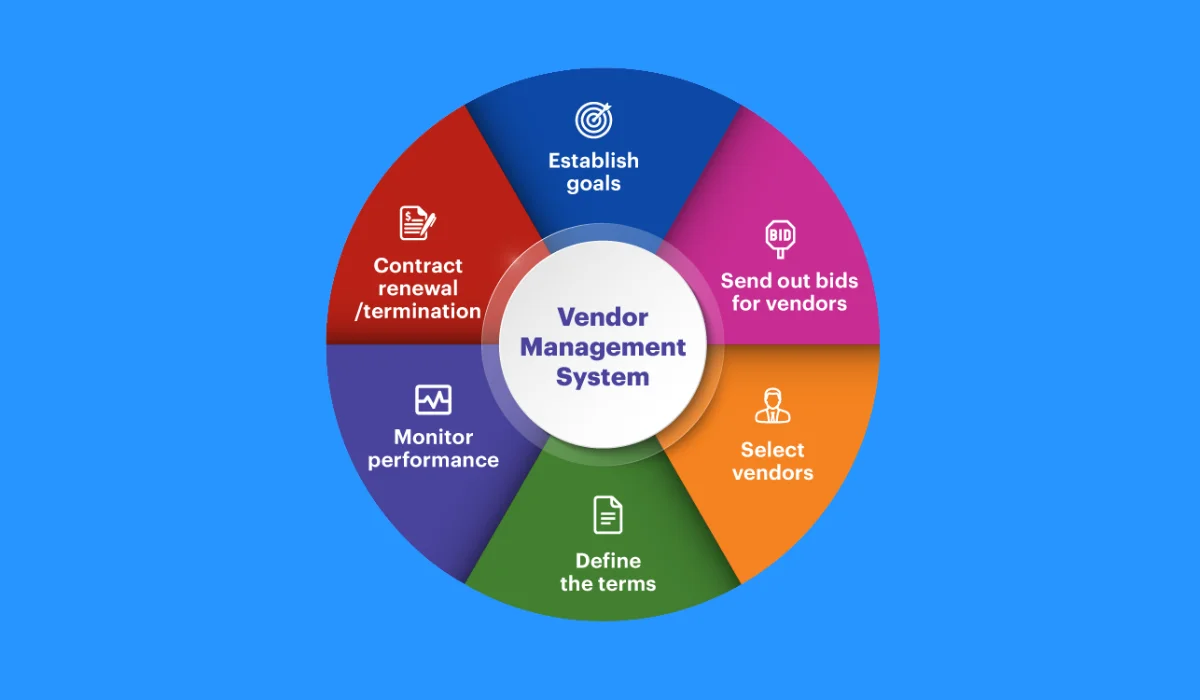Vendor relationships in manufacturing are not just routine partnerships, they directly affect the stability of production schedules, compliance with industry standards, and overall cost control. When a supplier misses a delivery window or fails to meet compliance requirements, it doesn’t just disrupt your procurement process, it can stall your entire operation.
Many manufacturers, especially those managing multi-tier supplier networks across geographies, still rely on fragmented systems like spreadsheets, siloed ERP modules, or old-school document repositories. These methods may have worked in the past. Still, today, they leave too much room for risk: duplicated vendor records, expired quality certifications, misaligned payment terms, and poor visibility across departments.
That’s where vendor data management (VDM) software comes into play. But choosing the right one requires more than ticking off a features list, it demands a deep understanding of your internal workflows, compliance landscape, and operational bottlenecks.
Why VDM Software Matters in Manufacturing

Manufacturing businesses operate in a high-pressure environment where even a minor misstep in supplier coordination can snowball into production downtime or compliance violations. From ISO 9001 to industry-specific standards like IATF 16949 in automotive or FDA regulations in medical manufacturing, maintaining supplier records in a consistent, auditable format is not just beneficial, it’s mandatory.
Imagine a scenario where your Tier-2 supplier’s quality certificate expired, but no alert was triggered because the document was stored in someone’s inbox. By the time the product reaches your facility, it’s too late. A proper VDM system would’ve flagged the expiration date well in advance, routed it through the right compliance checks, and kept your team informed without manual oversight.
Beyond compliance, manufacturers also face sourcing complexity. You may work with hundreds of vendors across categories like raw materials, packaging, tooling, logistics, and contract assembly. Keeping track of who supplies what, under which contract, and with what performance metrics is a full-time job, unless your system is built to handle that scale.
What Makes a VDM Solution Right for Your Business?
When evaluating, the features of vendor data management software matter but only when mapped to your real-life pain points. Let’s break down the essential capabilities through the lens of manufacturing operations.

1. Centralized Supplier Data with Role-Based Access
A typical manufacturing firm involves multiple departments in vendor-related decisions, ranging from procurement, quality assurance, and finance, to compliance teams, all of which touch supplier data. A centralized system ensures they work with the same version of the truth.
For example, suppose the procurement team onboarded a new supplier for metal components. In that case, the QA team should be able to access technical certifications and sample inspection reports from the same platform. Finance should instantly see payment terms and banking details without emailing anyone.
2. Automated Workflows That Reflect Your Supply Chain Reality
Vendor onboarding in manufacturing isn’t simple. Before placing the first purchase order, you may need to sign an NDA, approve samples, conduct supplier audits, or conduct internal safety compliance checks. A good vendor data management platform like Cost It Right allows you to set up sequences that mirror these steps, triggering specific actions when adding a new supplier.
This removes manual delays. For instance, once a supplier uploads their ISO certificate, the system can automatically route it to the compliance team for review before progressing to the next approval stage.
3. Built-in Checks for Data Integrity
Duplicate or incomplete entries are very common in vendor management and often leads to overpayments, procurement mismatches, or missed quality reviews in manufacturing. A capable system will validate entries during data entry, flagging duplicate supplier codes, missing tax IDs, or mismatched addresses.
Some solutions go further and match supplier names across watchlists or industry blacklists, particularly valuable for businesses dealing with international suppliers.
4. Audit Trails and Change Logs
Manufacturers often face internal or third-party audits. You need a clean trail of actions: who onboarded which vendor, when a document was updated, and who approved a compliance checklist. If your current method is based on email threads or paper forms, it’s time to rethink.
5. Compatibility with Your Existing Stack
Most manufacturing companies already run ERP systems—SAP, Oracle, Microsoft Dynamics, or
industry-specific solutions. The VDM platform should talk to these systems seamlessly. You don’t want your team manually copying vendor data across systems or relying on spreadsheets to bridge integration gaps.
For example, once a vendor is approved in the VDM, their record should flow automatically into your procurement module for POs and into finance for invoicing.
Also Read: Three Signs Your PO Approval Process Needs an Upgrade
Realistic Tips to Choose the Right Vendor Data Management Software

Instead of treating selection like a software shopping checklist, approach it like a process improvement project. Below are some guiding steps to keep your evaluation grounded.
1. Map Your Current Supplier Workflows
Before jumping into product demos, map how your organization handles supplier onboarding, qualification, and management. Where are the delays? Where is information duplicated? Where are mistakes likely to happen? This exercise helps you define what the software must solve, not just what it should have.
For instance, if you require third-party audits for chemical suppliers, ensure the system can handle audit scheduling, report storage, and reviewer assignments.
2. Prioritize Industry-Relevant Functionality
Generic supplier portals won’t meet the needs of a compliance-heavy manufacturing business. Look for solutions that understand your industry. Some platforms include modules for supplier scorecards, defect tracking, or corrective action plans, directly linked to the vendor record.
These are especially useful in lean manufacturing or Six Sigma environments where continuous improvement is central to vendor performance.
3. Involve the Right Teams Early
Procurement managers might be the primary user, but the quality, finance, and compliance team should be involved in trials and shortlisting. Often, a system that works for one team creates friction for another. For example, a platform may be great at vendor onboarding but lack robust financial data controls, leading to duplicate payments. A cross-functional pilot ensures everyone’s needs are met before signing a long-term contract.
4. Understand the Cost Beyond Licensing
Software costs go beyond the listed price. Does the vendor charge for support? How much customization is required to match your internal workflows? Will integration with your ERP require third-party developers? Get clarity on the total cost of ownership, especially if your data migration or integration needs are complex.
Final Thoughts
In manufacturing, your vendors aren’t just service providers but extensions of your supply chain. The software you choose to manage them directly impacts production agility, cost control, and regulatory standing.
The best vendor data management systems like Cost It Right don’t just digitize your current process but improve it. They reduce redundancy, improve visibility, and make your supplier ecosystem more responsive to change. Whether you are scaling up, restructuring global supply chains, or dealing with increasing compliance pressure, the right VDM solution becomes a critical pillar of operational strength.
So, when choosing your platform, don’t rush. Anchor your decision in how the system supports your actual work and whether it evolves with your changing needs. In manufacturing, control over your supplier network is control over your business.





